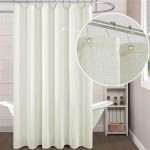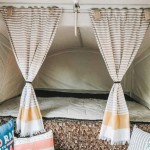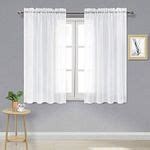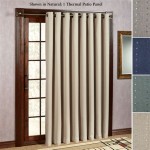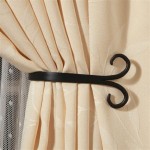Grey and White Bathroom Shower Curtains: A Detailed Examination
The bathroom, often a space of personal hygiene and relaxation, benefits immensely from thoughtful design choices. Among these choices, the shower curtain plays a crucial role, both functionally and aesthetically. A grey and white bathroom shower curtain offers a versatile option, capable of complementing a wide range of bathroom decors while providing privacy and preventing water from escaping the shower area. This article will explore the various aspects of grey and white bathroom shower curtains, including their advantages, design considerations, material options, and maintenance.
Versatility and Aesthetic Appeal
Grey and white, as neutral colors, possess inherent versatility, making them adaptable to numerous bathroom styles. This color combination can seamlessly integrate into minimalist, modern, traditional, or even rustic bathroom designs. The neutrality of grey and white allows for the introduction of other colors and textures through accessories, such as bath mats, towels, and wall art, without creating visual clashes. Furthermore, the simplicity of the color scheme can create a sense of calm and order, contributing to a more relaxing bathroom environment.
The aesthetic appeal of grey and white shower curtains extends beyond their ability to match existing decor. The color combination can be used to create different visual effects. A light grey and white curtain can brighten a small or dimly lit bathroom, making it feel more spacious. Conversely, a darker grey and white curtain can add a touch of sophistication and warmth to a larger bathroom. The pattern or texture of the curtain can further influence the overall aesthetic. For instance, a geometric pattern can add a modern touch, while a floral pattern can create a more traditional or feminine feel. The distribution of grey and white within the design can also affect the perceived appearance, with stripes, ombre effects, or intricate patterns offering distinct visual impacts.
Beyond color, the texture of the shower curtain also contributes significantly to its aesthetic appeal. Textured fabrics, such as waffle weaves or raised patterns, can add depth and visual interest to the bathroom. These textures can also enhance the tactile experience, creating a more luxurious and inviting atmosphere. The choice of texture should be considered in relation to the overall style of the bathroom. Smooth fabrics, such as polyester or microfiber, are generally more suitable for modern or minimalist designs, while textured fabrics may be more appropriate for traditional or rustic styles.
The opacity of the shower curtain is another important factor to consider. While the primary function of a shower curtain is to provide privacy, the level of opacity can influence the amount of light that enters the shower area. A completely opaque curtain will block out most of the light, creating a more private and enclosed space. This may be desirable in bathrooms with large windows or in shared bathrooms. However, a semi-opaque curtain will allow some light to pass through, creating a brighter and more airy shower experience. The choice of opacity should be based on personal preference and the specific needs of the bathroom.
Material Options and Their Characteristics
Shower curtains are available in a variety of materials, each with its own set of advantages and disadvantages. The most common materials include polyester, vinyl, cotton, and linen. The choice of material should be based on factors such as durability, water resistance, ease of cleaning, and cost.
Polyester is a synthetic fabric known for its durability and water resistance. It is also relatively inexpensive and easy to care for. Polyester shower curtains are typically machine washable and dry quickly, making them a convenient option for busy households. Polyester also resists wrinkles and fading, maintaining its appearance over time. However, polyester is not as absorbent as natural fibers, and it may require a shower curtain liner to prevent water from seeping through.
Vinyl is a waterproof plastic material that is commonly used for shower curtains. Vinyl shower curtains are highly effective at preventing water from escaping the shower area, and they are also relatively easy to clean. However, vinyl can be stiff and unattractive, and it may release harmful chemicals into the air. For this reason, it is important to choose a vinyl shower curtain that is labeled as PVC-free. PVC-free vinyl shower curtains are made from polyethylene vinyl acetate (PEVA) or ethylene vinyl acetate (EVA), which are considered to be safer alternatives to PVC.
Cotton is a natural fiber that is soft and absorbent. Cotton shower curtains can add a touch of warmth and texture to the bathroom. However, cotton is not naturally water resistant, and it will require a waterproof liner to prevent water from seeping through. Cotton shower curtains also tend to shrink and wrinkle easily, requiring more frequent ironing. Furthermore, cotton can be more expensive than synthetic materials like polyester or vinyl.
Linen is another natural fiber that is known for its luxurious feel and durability. Linen shower curtains can add a touch of elegance to the bathroom. However, linen is even less water resistant than cotton, and it will require a high-quality waterproof liner. Linen shower curtains are also more expensive than other materials, and they require special care when washing and ironing.
In addition to these common materials, shower curtains can also be made from other fabrics, such as microfiber or nylon. Microfiber is a synthetic fabric that is known for its softness and absorbency. Nylon is a synthetic fabric that is known for its strength and durability. The choice of material will ultimately depend on personal preference and the specific needs of the bathroom.
Maintenance and Care
Proper maintenance is essential for extending the lifespan of a shower curtain and preventing the growth of mold and mildew. The frequency of cleaning will depend on factors such as humidity levels, water hardness, and usage patterns. However, it is generally recommended to clean a shower curtain at least once a month.
Polyester shower curtains can typically be machine washed in cold water with a mild detergent. It is important to avoid using bleach or fabric softeners, as these can damage the fabric. The shower curtain should be tumble dried on low heat or hung to dry. Ironing may be necessary to remove any wrinkles.
Vinyl shower curtains can be wiped down with a damp cloth and a mild detergent. It is important to avoid using abrasive cleaners or scrubbing brushes, as these can scratch the surface of the vinyl. Vinyl shower curtains should be hung to dry completely before being reinstalled.
Cotton and linen shower curtains require more careful washing and drying. These fabrics should be washed in cold water on a delicate cycle with a mild detergent. It is important to avoid using bleach or fabric softeners. Cotton and linen shower curtains should be hung to dry, and ironing may be necessary to remove any wrinkles. It is also important to follow the manufacturer's instructions for cleaning and care.
In addition to regular cleaning, it is important to address any mold or mildew growth as soon as it is detected. Mold and mildew can thrive in humid environments, and they can cause discoloration and unpleasant odors. To remove mold and mildew, mix a solution of water and bleach in a spray bottle. Spray the solution onto the affected areas and let it sit for a few minutes. Then, scrub the area with a brush or sponge and rinse thoroughly with water. It is important to wear gloves and eye protection when working with bleach.
Proper ventilation can also help to prevent the growth of mold and mildew. After showering, open the bathroom window or turn on the exhaust fan to allow excess moisture to escape. Leaving the shower curtain partially open can also help to promote air circulation and prevent the buildup of moisture.
Regularly inspecting the shower curtain for signs of wear and tear is also important. Torn or damaged shower curtains should be replaced promptly to prevent water damage and maintain privacy. By following these maintenance tips, it is possible to extend the lifespan of a shower curtain and keep the bathroom clean and hygienic.

Home Decorators Collection 72 In Stone Gray And White Trellis Shower Curtain Tre Sg The

Koetar Grey And White Geometric Polyester Shower Curtain 72 X Waterproof

At Home Gray Marbled Print Metallic Shower 72 Grey Curtain

Grey And White Herringbone Shower Curtain Modern Gray Geometric Chevron Striped Bathroom Decor Waterproof Minimalist Fabric Polyester Set With 12

Home Decorators Collection 72 In Ivory And Gray Botanical Floral Shower Curtain Nh 200696

Threshold 100 Cotton Leopard Glam Woven Machine Washable Buttonhole Top Ombre Gray Shower Curtain

Gray Shower Curtain Set Grey For Bathroom Slub Fabric Modern Geometric Bath Curtains Decorative

Geometric Grey White Shower Curtain And Rug Set Modern Minimalist Bathroom Décor

Silver Gray Grey Sequin Glam Shower Curtain Fabric Bathroom Hooks 72 In Elegant

Geo Circles Gray Shower Curtain Geometric Bathroom Modern Mid Century Etsy


